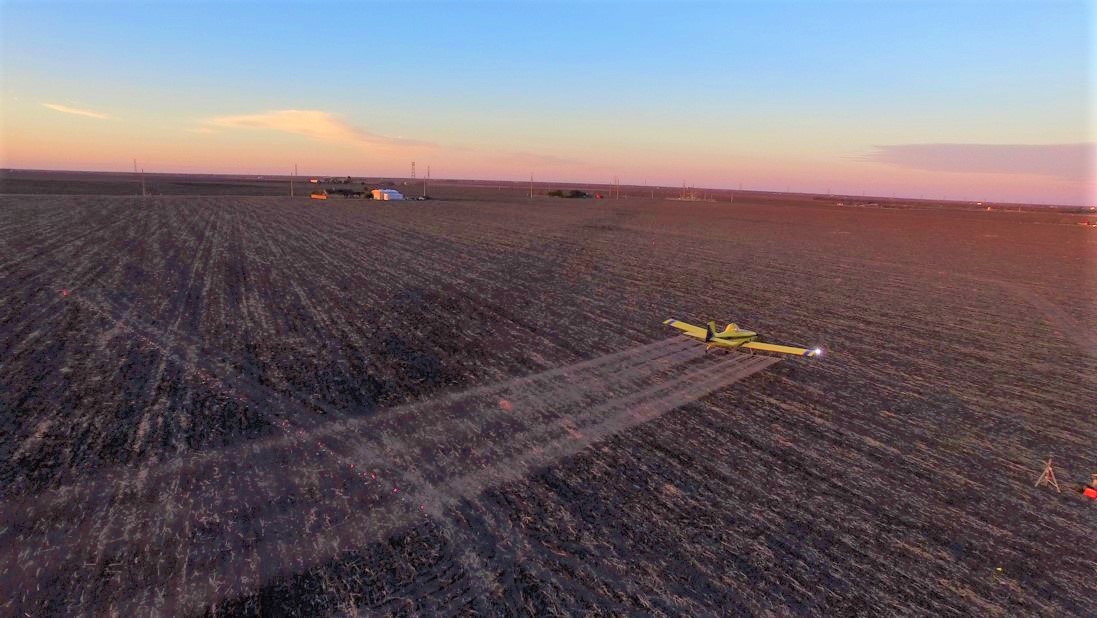Airborne Off-target Movement Research

Over the past decade, Stone Environmental, Inc. (Stone) has been a leader in Good Laboratory Practice (GLP) airborne off-target movement (OTM) research in spray drift deposition, field volatility, and in-field vegetative vigor. Since 2013, we’ve performed over 50 OTM field studies in various locations across the US and beyond examining:
- Aerial, Unmanned Aircraft System (UAS), and ground spray application methods
- In-field potted non-target terrestrial plant (NTTP) vegetative vigor and in situ plant effects from drift and vapor deposition
- Sample media efficacy with crop protection products and tracer dyes
- Drift reduction technology (DRT) efficacy research
- Scalable study designs for characterization of air concentration and vapor flux from volatile crop protection products
Drawing from our depth of experience, we successfully combined drift and volatilization reduction technologies with drift, air, and vegetative vigor monitoring into complex OTM studies known as hybrid studies. Often, our field trials have been paired with wind tunnel testing or greenhouse vegetative vigor assessments at our partner facilities.
Stone’s field team has established processes for continual innovation and improvement, leading to equipment, procedural, and study design refinements that have kept us at the forefront of airborne OTM research. Some of the areas that have received recent improvements include, but are not limited to:
- Meteorological data collection and monitoring
- Plot layout and visualization
- Sprayer verification
- Batteries for air pumps/meteorological stations
- Sample media tracking using QR codes
- Chains of custody and laboratory communication processes
Complementing our field expertise, Stone has experts in environmental modeling that perform volatile flux, off-target air concentration and vapor deposition, spray drift deposition, and plant effects rating statistics and modeling in compliance with GLP. Our collective expertise streamlines the study process and provides continuity from study conception to report finalization for our in-house study director team or external project managers.
Stone’s work has successfully supported product stewardship and registration through the adoption of label changes for DRT and modifications to spray buffers that better represent realistic OTM scenarios when compared to conservative environmental model estimates. To learn more about some of Stone’s recent successes, read one of our recent publications (A Field Spray Drift Study to Determine the Downwind Effects of Isoxaflutole Herbicide to Non-target Plants) or read our abstract from the August 2021 ACS conference (Lessons Learned from Two Years of Off-target Movement Field Studies).